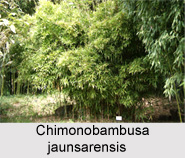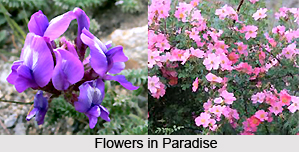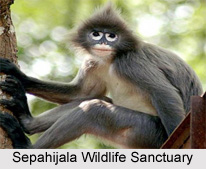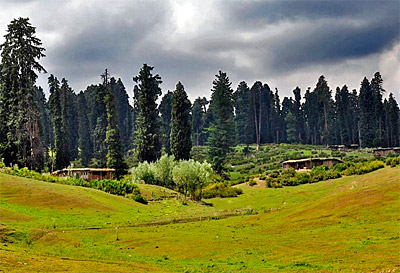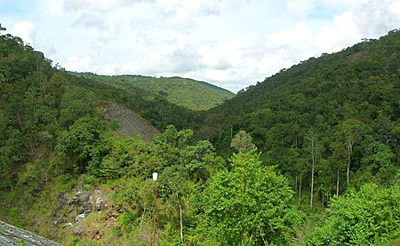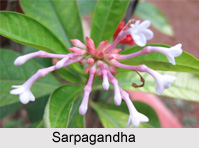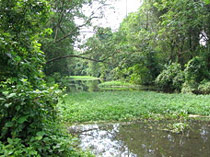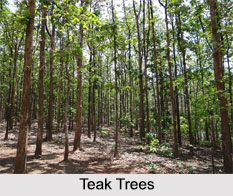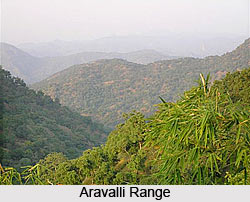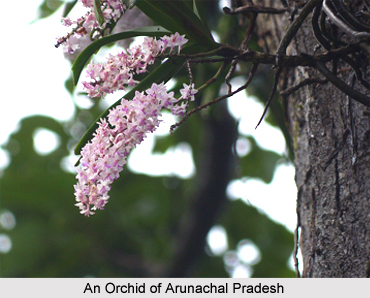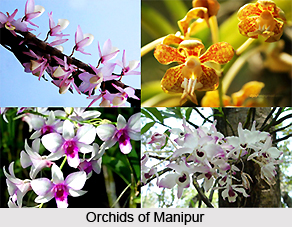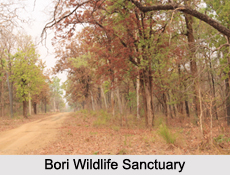 The states of Madhya Pradesh and Chhattisgarh are located in the central part of India. Central India has several wildlife sanctuaries, which are protected areas sheltering the flora and fauna in the region. These wildlife sanctuaries are described and mentioned below.
The states of Madhya Pradesh and Chhattisgarh are located in the central part of India. Central India has several wildlife sanctuaries, which are protected areas sheltering the flora and fauna in the region. These wildlife sanctuaries are described and mentioned below.
Wildlife Sanctuaries of Madhya Pradesh
Bori Wildlife Sanctuary is located in Hoshangabad District of Madhya Pradesh. It was established in 1977and is spread over an area of about 518 square kilometers. The sanctuary has mixed deciduous and bamboo forests, wild boar, muntjac deer, etc. Gandhi Sagar Sanctuary is situated on the northern boundary of Mandsaur and Nimach districts. It was established in 1974 and occupies an area of about 368.62 square kilometers. Sardarpur Wildlife Sanctuary is located in Dhar district.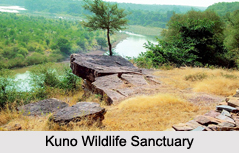 It was established in the year 1983 and occupies a total area of about 348 square kilometers. Son Gharial Wildlife Sanctuary, which was established in 1981has alligators, crocodiles and tortoises as its principal fauna. Karera Wildlife Sanctuary is located in the Shivpuri district. It was established in 1981and is occupied by mixed deciduous forests and acacia, riverine and swamp vegetation, bustard, black buck, pintails, terns, etc. Kuno Wildlife Sanctuary is located in the Sheopur district of north western Madhya Pradesh. It was established in 1981 and occupies an area of about 900 square kilometers. Some of the other wildlife sanctuaries of Madhya Pradesh are Kheoni Wildlife Sanctuary, Orcha Wildlife Sanctuary and National Chambal Wildlife Sanctuary.
It was established in the year 1983 and occupies a total area of about 348 square kilometers. Son Gharial Wildlife Sanctuary, which was established in 1981has alligators, crocodiles and tortoises as its principal fauna. Karera Wildlife Sanctuary is located in the Shivpuri district. It was established in 1981and is occupied by mixed deciduous forests and acacia, riverine and swamp vegetation, bustard, black buck, pintails, terns, etc. Kuno Wildlife Sanctuary is located in the Sheopur district of north western Madhya Pradesh. It was established in 1981 and occupies an area of about 900 square kilometers. Some of the other wildlife sanctuaries of Madhya Pradesh are Kheoni Wildlife Sanctuary, Orcha Wildlife Sanctuary and National Chambal Wildlife Sanctuary.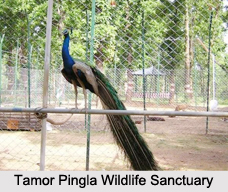
Wildlife Sanctuaries of Chhattisgarh
Tamor Pingla Wildlife Sanctuary is located in the district of Surajpur. Tamor Pingla was notified as a wildlife sanctuary in 1978 and occupies an area of about 608.55 square kilometers. It has sal, bamboo forests barking deer, sambar deer, bear, etc. Barnawapara Sanctuary is situated in the Mahasamund district of Chhattisgarh. The sanctuary has a total area of about 245 square kilometers. Barnawapara Sanctuary was established in 1976. This sanctuary houses tigers, hyenas, porcupine, bison and python. Sita Nadi Sanctuary is situated in the district of Dhamtari. This sanctuary was established in 1974 and occupies a total area of about 556 square kilometers. This sanctuary comprises of sal, bamboo, teak, leopards, antelopes, etc. Bhairamgarh Wildlife Sanctuary is situated about 139 kilometers from Jagdalpur. It was established in 1983 and occupies an area of about 138.95 square kilometers. Wild Buffalo is the major attraction of the sanctuary. Udanti Sanctuary was established in 1983, after the Wildlife Protection Act of 1972. The total area covered by the wildlife sanctuary is about 232 square kilometers. Some of the other wildlife sanctuaries of Chhattisgarh are Sonanadi Wildlife Sanctuary and Palmed Wildlife Sanctuary.
